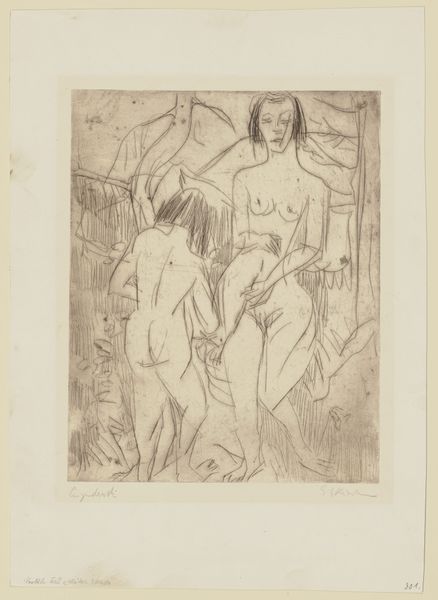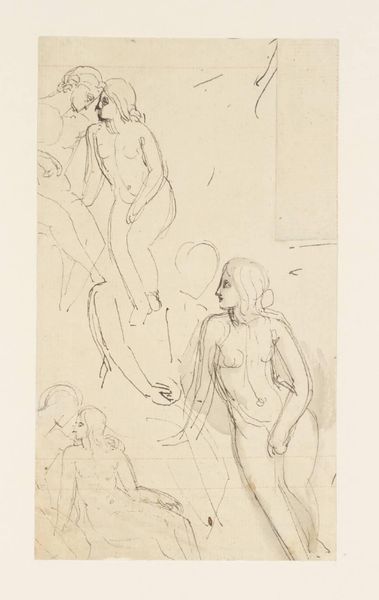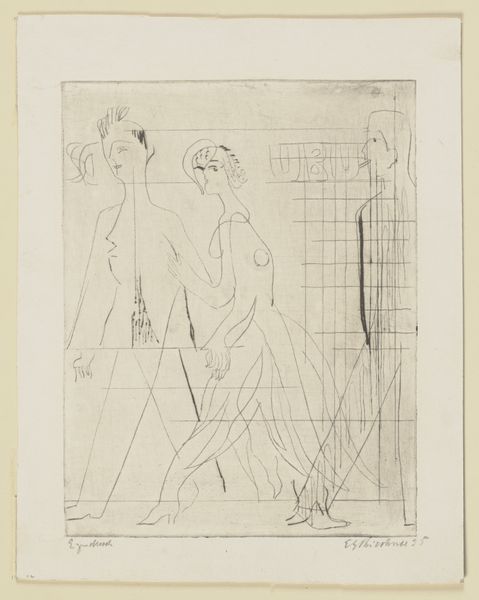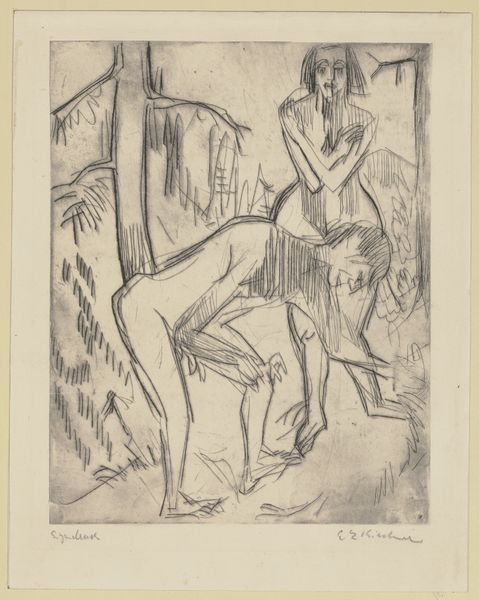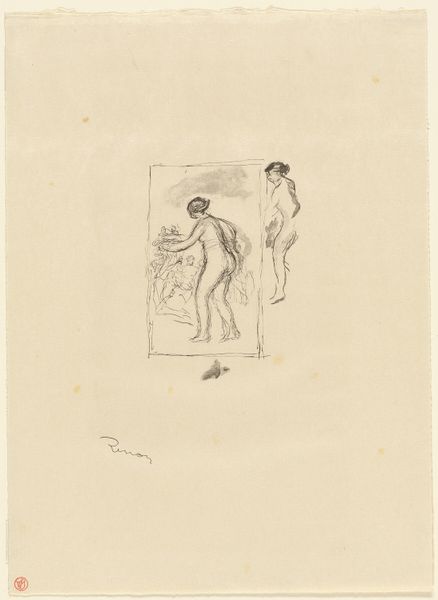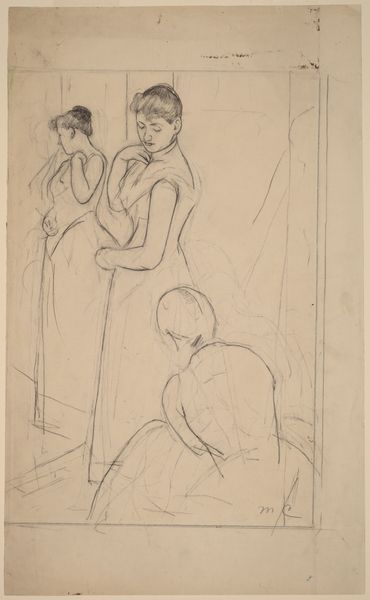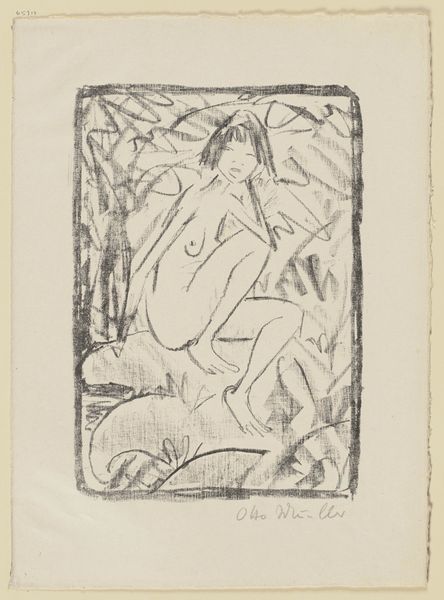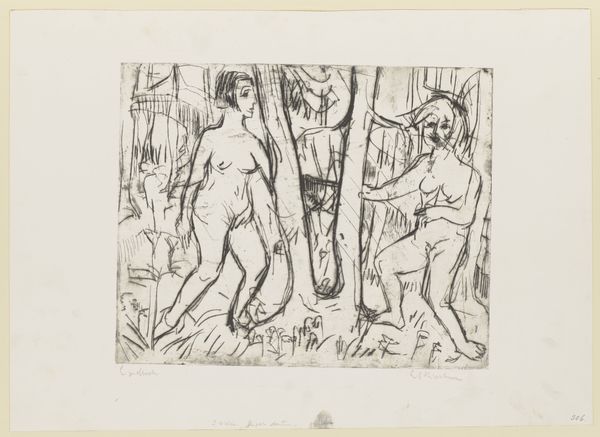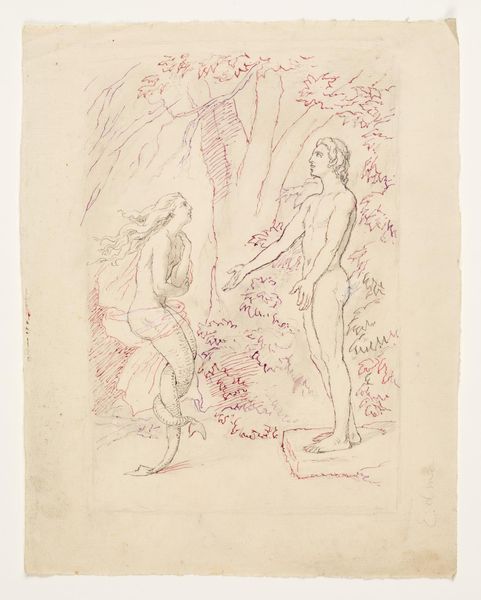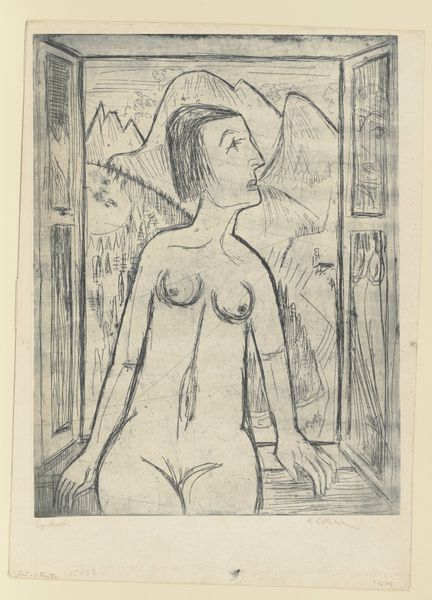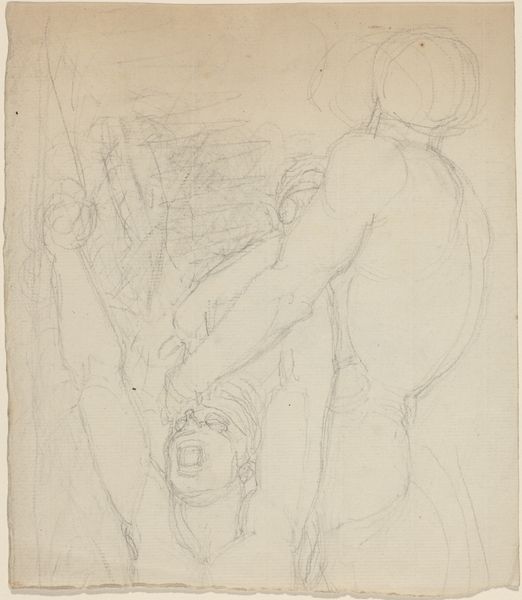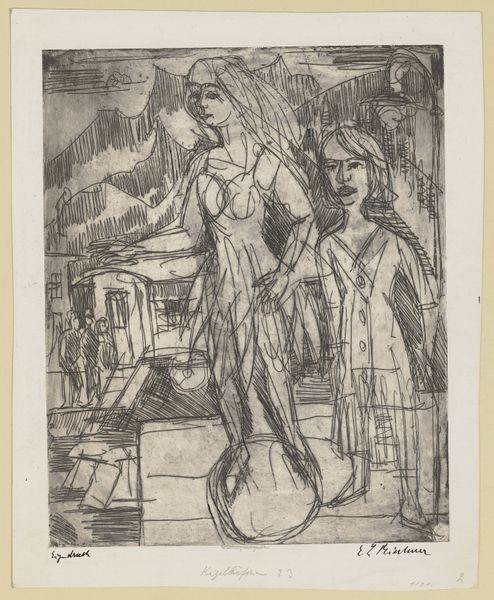
drawing, print, etching
#
drawing
# print
#
etching
#
figuration
#
expressionism
#
nude
Copyright: Public Domain
Curator: Ernst Ludwig Kirchner's "Zwei nackte Mädchen," or "Two Nude Girls," created in 1926, presents a stark, revealing portrayal of the female form through etching and printmaking. It resides here at the Städel Museum. What are your initial impressions of its composition? Editor: Stark is certainly the word that comes to mind. The linear quality created by the etching technique contributes to the intense feeling, almost like a drawing made in haste. Curator: Yes, the visible linework and deliberate unfinished quality were core to Kirchner's exploration of raw emotion. He aimed to capture the unvarnished reality of his subjects. Given its creation in the interwar period, we must consider the socio-political climate. The Weimar Republic witnessed profound shifts in sexual expression and gender roles, didn’t it? Editor: Exactly, but even outside of that Weimar context, what fascinates me are the figure's distortions, and the flattening of planes—the lack of tonal depth pushes the image towards pure graphic design. One could explore semiotic readings based on the symbolic charge of certain shapes, but I'd really prefer to keep that in the background. Curator: Fair point. The formal qualities contribute strongly to its Expressionistic intent. These women resist the classical ideal, offering a challenging perspective. Think of the era's focus on modern women who asserted themselves independently, disrupting traditional roles. It suggests a sense of freedom and defiance but also speaks to vulnerability within a rapidly changing social fabric. Editor: While I agree that there's a rejection of classical forms, and perhaps even a defiant spirit present, it's the overall dissonance that captivates me. The etching exemplifies his movement away from harmony toward something far more disjointed and visually jarring. Curator: Well, Kirchner deliberately challenged bourgeois expectations. Viewing it today invites us to consider representations of women across history and ponder the cultural forces at play then and even now. Editor: And for me, thinking about Kirchner’s formal experiments alongside this unsettling affect expands my perspective on how far away the expressionistic line can get you from pure representation.
Comments
No comments
Be the first to comment and join the conversation on the ultimate creative platform.
